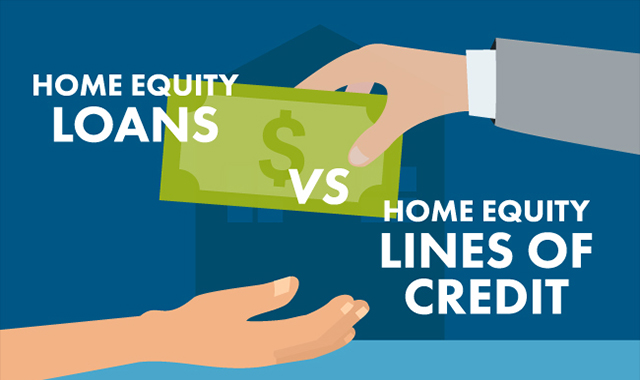Discovering the Different Types of Equity Release Mortgages Available Today
Equity Release home mortgages present different choices for house owners aged 55 and over. equity release mortgages. These monetary items cater to various requirements and preferences, enabling people to accessibility funds from their residential or commercial property. From lifetime home mortgages to common admiration home loans, each type provides unique benefits. Understanding these choices is vital for making informed choices. What variables should one take into consideration when selecting one of the most ideal equity Release strategy? The details that follow may clarify this important topic
Comprehending Equity Release Mortgages
Equity Release mortgages give home owners, normally those aged 55 and over, with a way to access the value locked up in their residential or commercial property without requiring to market it. This monetary alternative permits people to transform a part of their home equity right into cash, which can be made use of for numerous objectives, such as home improvements, paying off financial debts, or funding retirement.Equity Release can take different types, yet it fundamentally involves borrowing versus the worth of the home while retaining ownership. House owners can choose to get a swelling amount or a series of smaller sized settlements, relying on their financial demands and preferences.Additionally, the quantity offered for Release is influenced by the property's worth, the homeowner's age, and specific lending institution criteria. In general, comprehending equity Release mortgages is crucial for homeowners to make enlightened decisions concerning touching right into their home's equity while thinking about the long-term ramifications.
Life time Mortgages
Lifetime home mortgages represent among one of the most prominent types of equity Release. This financial item enables home owners, usually aged 55 or older, to obtain versus the value of their residential or commercial property while retaining ownership. The funding, which is protected against the home, accrues interest with time but does not need month-to-month payments. Instead, the lending and accumulated rate of interest are paid off when the house owner dies or moves into long-lasting care.Lifetime home mortgages provide versatility, as customers can pick to receive a swelling sum or decide for a drawdown facility, accessing funds as needed. Importantly, lots of plans come with a no-negative-equity guarantee, guaranteeing that debtors will certainly never owe greater than the worth of their home. This feature gives comfort, enabling people to enjoy their retired life without the anxiety of diminishing their estate. In general, life time home loans function as a feasible alternative for those seeking financial backing in later life.
Home Reversion Program

Drawdown Life Time Mortgages
While several home owners look for ways to access their wealth, drawdown lifetime home mortgages provide a versatile alternative that enables people to Release funds progressively. This kind of equity Release home mortgage allows property owners to obtain versus the value of their residential or commercial property while preserving ownership. Unlike traditional life time home loans, drawdown strategies allow borrowers to access a section of their equity upfront and take out extra funds as required, as much as an established limit.This function can be particularly advantageous for those that want to handle their finances meticulously, as it lessens interest build-up by just charging interest on the amounts attracted. In addition, drawdown lifetime home loans commonly feature a "no adverse equity assurance," making sure that debtors will never owe greater than their home's value. This option fits senior citizens who want financial safety and security and adaptability, enabling them to satisfy unanticipated costs or keep their way of life without having to market their residential or commercial property.
Improved Life Time Mortgages
Improved Life time Home mortgages offer unique benefits for qualified home owners looking for to Release equity from their homes. Recognizing the eligibility standards is vital, as it determines that can benefit from these specialized finances. Nevertheless, it is likewise essential to review the possible downsides connected with boosted alternatives, making certain a well-shaped perspective on their usage.
Eligibility Standards Described
Comprehending the qualification requirements for Boosted Lifetime Mortgages is essential for possible candidates looking for to access the equity in their homes. Commonly, applicants must be aged 55 or older, as this age need is common in the equity Release market. Home owners should have a building try here valued at a minimal threshold, which can vary by lender. Importantly, the property needs to be their key residence and in good condition. Lenders commonly assess the homeowner's health and wellness standing, as particular wellness conditions might enhance qualification and advantages. Additionally, applicants should not have existing considerable debts protected against the building. Meeting these criteria allows people to explore Enhanced Life time Home loans as a feasible option for accessing funds locked up in their homes.
Benefits of Boosted Mortgages
After making clear the qualification criteria, it comes to be evident that Enhanced Lifetime Home loans use several significant benefits for house owners seeking to utilize their residential or commercial property equity. Primarily, they give accessibility to a larger car loan amount contrasted to typical lifetime home mortgages, benefiting those with health conditions or age-related aspects that enhance their life expectancy threat. This boosted loaning capability allows homeowners to satisfy different monetary needs, such as home enhancements or retirement expenses. In addition, these home mortgages typically come with versatile repayment choices, allowing borrowers to manage their finances better. The no-negative-equity assurance even more ensures that house owners will never ever owe greater than their residential or commercial property's value, providing satisfaction. In General, Boosted Life time Mortgages provide a compelling option for qualified property owners looking for financial remedies.
Possible Disadvantages Considered
While Improved Life time Mortgages supply many benefits, prospective drawbacks necessitate mindful consideration. One substantial worry is the influence on inheritance; the equity released lowers the value of the estate entrusted to recipients. Additionally, these home loans can accrue substantial rate of interest over time, leading to a significant debt that may exceed the initial funding amount. There might additionally be constraints on residential property alterations or rental, limiting homeowners' flexibility. Boosted products commonly need specific wellness problems, indicating not all house owners will qualify. Lastly, managing the fees and charges related to these home loans can be intricate, potentially causing unforeseen expenses. Because of this, people need to thoroughly examine their scenario and consult financial consultants prior to continuing.
Shared Recognition Mortgages
Shared Admiration Mortgages stand for a special economic plan that allows property owners to gain access to equity while sharing future building value boosts with the lending institution. This strategy supplies potential advantages such as decreased regular monthly payments, yet it likewise comes with drawbacks that should be meticulously taken into consideration. Recognizing the eligibility needs is vital for those thinking about this alternative.
Concept Introduction
Equity Release home loans, especially in the type of shared admiration mortgages, supply house owners a distinct financial solution that allows them to gain access to funds by leveraging the value of their home. In this arrangement, a lender offers a loan to the property owner, which is commonly paid off with a share of the residential property's future appreciation in value. This implies that when the house owner markets the residential or commercial property or passes away, the lending institution gets a percent of the raised worth, instead of simply the preliminary finance quantity. Shared admiration home mortgages can be appealing for those looking to supplement their revenue or finance significant expenditures while maintaining possession of their home. The monetary effects of common gratitude have to be very carefully considered by possible debtors.
Advantages and Downsides
Common admiration home mortgages can provide substantial monetary advantages, they additionally come with remarkable drawbacks that potential customers need to consider. These mortgages allow property owners to gain access to equity in their buildings while sharing a part of any future appreciation with the loan provider. This plan can be advantageous throughout times of rising residential or commercial property values, supplying considerable funds without regular monthly settlements. The major downside is the potential loss of equity; homeowners may end up with substantially lowered inheritance for beneficiaries. Furthermore, the complexity of the terms can bring about misconceptions pertaining to repayment responsibilities and the percent of appreciation owed. For that reason, it is crucial for customers to evaluate these aspects meticulously prior to committing to a common gratitude mortgage.
Eligibility Needs
What criteria must property owners fulfill to qualify for a common appreciation home loan? Primarily, candidates must be at the very least 55 years old, assuring they are within the target market for equity Release items. In addition, the building needs to be their main home and normally valued over a defined minimum limit, often around ? 100,000. Lenders likewise assess the home owner's monetary scenarios, consisting of revenue and arrearages, to determine they can handle the home loan properly. Significantly, the property should remain in excellent condition and without considerable lawful encumbrances. Homeowners should also have a clear understanding of the terms, including just how recognition will be shared with the lender upon sale or transfer of the residential property, as this impacts general returns.
Choosing the Right Equity Release Choice

Regularly Asked Questions
What Age Do I Need to Be for Equity Release?
The age demand for equity Release normally begins at 55 for the majority of strategies. However, see this website some carriers may provide alternatives More Help for those aged 60 and above, reflecting varying terms based upon individual situations and lending institution policies.
Will Equity Release Impact My Inheritance?
Equity Release can influence inheritance, as the amount obtained plus passion minimizes the estate's worth. Heirs may get less than expected, depending upon the property's recognition and the total financial debt at the time of passing.
Can I Move House With Equity Release?
The concern of moving home with equity Release develops regularly. Usually, individuals can transfer their equity Release plan to a new home, however details conditions might use, calling for appointment with the lender for guidance.
Are There Charges Connected With Equity Release Mortgages?
Fees connected with equity Release home loans can include setup charges, evaluation charges, and legal costs. In addition, there may be early payment charges, which can influence the general expense and monetary implications for the customer.
Exactly How Does Equity Release Impact My Tax Obligation Circumstance?
Equity Release can influence one's tax obligation circumstance by possibly raising gross income, as launched funds are considered resources. However, it typically does not sustain prompt tax obligation liabilities, making it important to consult a monetary consultant for tailored advice.
Verdict
In recap, the variety of equity Release home loans offered today provides house owners aged 55 and over numerous paths to access their property's value - equity release mortgages. Whether opting for a lifetime mortgage, home reversion strategy, or various other choices, each option presents distinctive advantages tailored to specific economic needs. Mindful factor to consider and assessment with a monetary advisor are important to guarantee the chosen equity Release solution aligns with personal goals and financial scenarios, eventually assisting in educated decision-making for a secure financial future. Equity Release mortgages present different choices for house owners aged 55 and over. Equity Release mortgages provide home owners, typically those aged 55 and over, with a means to access the value tied up in their home without needing to offer it. Boosted Life time Home mortgages supply unique advantages for eligible house owners seeking to Release equity from their residential or commercial properties. Equity Release home mortgages, specifically in the type of shared appreciation home mortgages, offer homeowners an unique monetary option that enables them to access funds by leveraging the worth of their property. In recap, the range of equity Release home mortgages offered today offers home owners aged 55 and over several pathways to access their residential or commercial property's worth
Comments on “Future Effects of Equity Release Mortgages on Property Ownership”